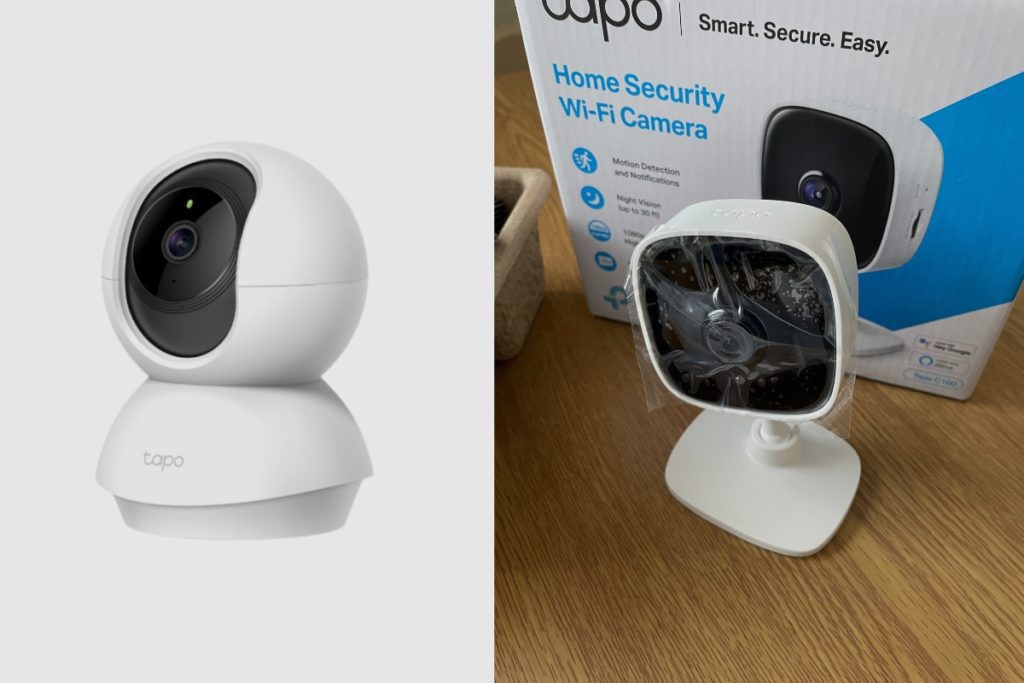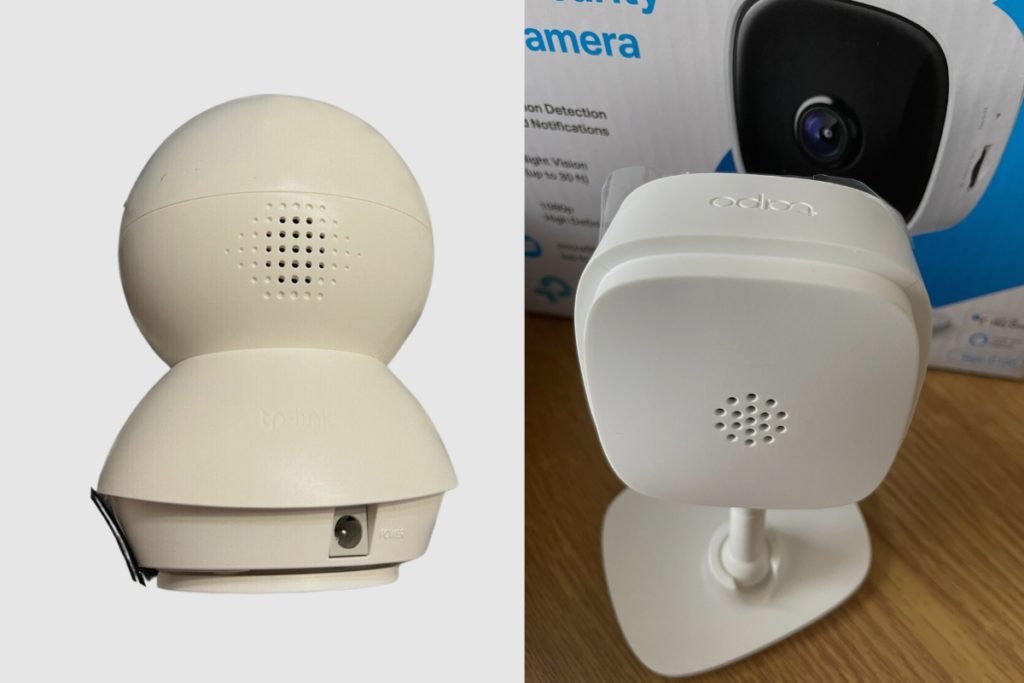In this blog post, we will explore the key differences between two popular home security cameras from TP-Link – the Tapo C100 and the C200. As smart home technology becomes more accessible, indoor security cameras are an easy way to get started monitoring your home. But with so many options on the market, it can get confusing sorting out which model is right for your needs and budget.
By the end of this post, you’ll have a clear understanding of how the Tapo C100 and C200 compare in terms of design, features, image quality, and cost. We’ll look at the pros and cons of each model and help determine which Tapo camera is the best fit for your home security setup. Let’s get started!
Key Takeaways
- The Tapo C200 has a bulkier design with pan/tilt functionality, while the C100 has a more streamlined fixed viewing angle form.
- The C200 records crisper 1080P video, Just like the C100. It also likely has a slightly wider field of view.
- Key features like night vision, motion detection, and two-way audio are similar between models. The C200 costs about $10-15 more.
- The C200 is better for flexible monitoring of larger spaces, while the C100 is ideal for compact setups.
- Key Takeaways
- How do the Tapo C100 and C200 security cameras compare in design?
- How does the video and image quality compare between the Tapo C100 and C200 security cameras?
- How do the Tapo C100 and C200 compare in terms of features?
- How much do the Tapo C100 and C200 cameras cost?
- Final Thoughts:
- Useful Links:
Related Post: TP-Link Tapo C100 Camera Review.

How do the Tapo C100 and C200 security cameras compare in design?
The most obvious difference at first glance between the Tapo C100 and C200 is their physical design and form factor. These differences allow for some variation in how and where the cameras can be installed.
The Tapo C100 has a slim and streamlined profile, with a small flat base that sits on a table or shelf and a longer oval-shaped stem that houses the camera. The design allows the C100 to remain relatively inconspicuous. The camera itself can tilt up and down to adjust the viewing angle but does not pan side to side.
By contrast, the Tapo C200 has a larger, rounder base with the camera encased in a sphere that sits atop it. The spherical shape allows the entire camera housing to pan 360 degrees and tilt up 114 degrees to cover a wide area. This also enables the C200 to be mounted on walls or ceilings for more flexibility.
The Tapo C200’s greater range of motion makes it better suited for monitoring larger spaces. You can scan across a whole room without needing to reposition the base. It also lets you easily angle the camera down to view directly below – handy for watching high-traffic areas.
But the C200 achieves that flexibility through a bulkier design. The Tapo C100 has a smaller footprint, making it ideal for discrete placement on shelves or in corners. For anyone prioritizing a streamlined, minimalist look, the C100 has a leg up.

How does the video and image quality compare between the Tapo C100 and C200 security cameras?
The other major difference between the Tapo C100 and the C200 lies in the video resolution and image quality they can capture.
The C100 records video at a crisp 1080p full HD resolution. For an indoor Wi-Fi camera priced around $25, that level of detail is impressive. You’ll be able to clearly see faces, clothing colours, text on documents and other fine details when viewing the C100’s footage.
But the pricier Tapo C200 ups the ante with support for 2K QHD video recording at a resolution of 2560 x 1440 pixels. That over 50% boost in pixels compared to 1080p gives you even more clarity in your video footage. It could better allow you to make out small text, see clearer facial details, or zoom in on footage after the fact while retaining image quality.
In optimal lighting conditions, the difference may not stand out.The other specification that influences image quality is the camera’s field of view – dictating how wide of a scene it can capture. The C100 touts a 105° field of view, which is fairly standard for 1080p Wi-Fi cameras.
Though TP-Link doesn’t specify the field of view for the 1440p Tapo C200, most cameras jump to between 110° to 120°. So it’s likely the C200 has a modestly wider viewing angle than its more affordable counterpart.

How do the Tapo C100 and C200 compare in terms of features?
Diving deeper into their specs sheets, the Tapo C100 and C200 share a lot of core features you’d hope to find in modern indoor security cameras. This includes:
- Night vision – Both cameras use infrared LEDs to enable night vision capabilities, providing black and white video when ambient lighting becomes too dark. They offer the same 30-foot range of IR night vision.
- Motion detection – You can set up custom motion detection zones that will trigger alerts to your phone when the cameras sense movement. Helpful for keeping tabs on high-traffic areas.
- Two-way audio – There’s a speaker and microphone built into each camera, allowing you to listen and talk through the camera using the mobile app. Useful for checking in on kids or pets.
- Local storage – Both cameras support microSD cards up to 128GB for storing recordings even if your Wi-Fi goes down. You get full manual control over video clips.
- Smart assistant integration– The C100 and C200 work with Amazon Alexa and Google Assistant for handy voice controls. You can pull up live views, trigger motion detection and more through voice commands.
The core features that enable remote monitoring, motion alerts, and handy integrations check out across both Tapo cameras. and more flexible physical design. But otherwise the in-app controls and day-to-day functionality align closely for these sub-$50 Wi-Fi cameras.

How much do the Tapo C100 and C200 cameras cost?
With such similar specs and features outside of resolution and design, cost can be a key factor in determining which of these Tapo cameras best fits your budget.
The Tapo C100 punches above its weight with robust home security features, given its affordable $25 retail pricing. It’s a particularly compelling option if you want to deploy multiple cameras in different rooms. Adding 3-4 C100 cameras gives you ample coverage at under $100 total.
Meanwhile, the feature-rich Tapo C200 carries only a slight premium at around a $35 MSRP. The more advanced 2K video resolution sensor and hardware for pan/tilt functionality add to the cost. But at $10-15 more than the C100, the latest Tapo C200 pricing still comes in quite affordable compared to many higher-end Wi-Fi cameras.
In short – the C100 gives you the best value for money if you’re looking to stick to a tighter budget. But the C200 packs upgraded imaging and versatility that justifies the small price bump for many shoppers.
Final Thoughts:
Should I choose the Tapo C100 or C200 for my home security camera?
At the end of the day, choosing between the Tapo C100 and C200 comes down to your priorities:
- Do you want smoother 2K video and more flexible monitoring with pan/tilt controls? Go with the C200.
- Are you looking for a more streamlined design and the best value? The C100 is your pick.
If keeping costs low is the priority, then the C100 brings superb value and core security camera functionality for under $30. For small spaces like hallways or just getting started with home monitoring, it fits the bill nicely.
But the Tapo C200 upgrades several key areas – higher 2K resolution for crisper footage, the ability to pan around to cover more ground, and robust mounting options. For the modest price increase, it can be worth opting for the C200 if you need to monitor larger rooms or want the best detail from a single vantage point.
Hopefully, this breakdown gives you a better grasp on how TP-Link’s affordable Tapo security cameras compare. And whether the C100 or C200 is the right pick to help keep your home safe with easy whole-home monitoring. Both pack quite a punch without breaking the bank!
Image Gallery – What is the Difference Between Tapo C100 and C200 Home Security Cameras?





Useful Links:
References:
- About the TP-Link Tapo.
- About TP-Link Tapo Support.
- About Security Camera.









